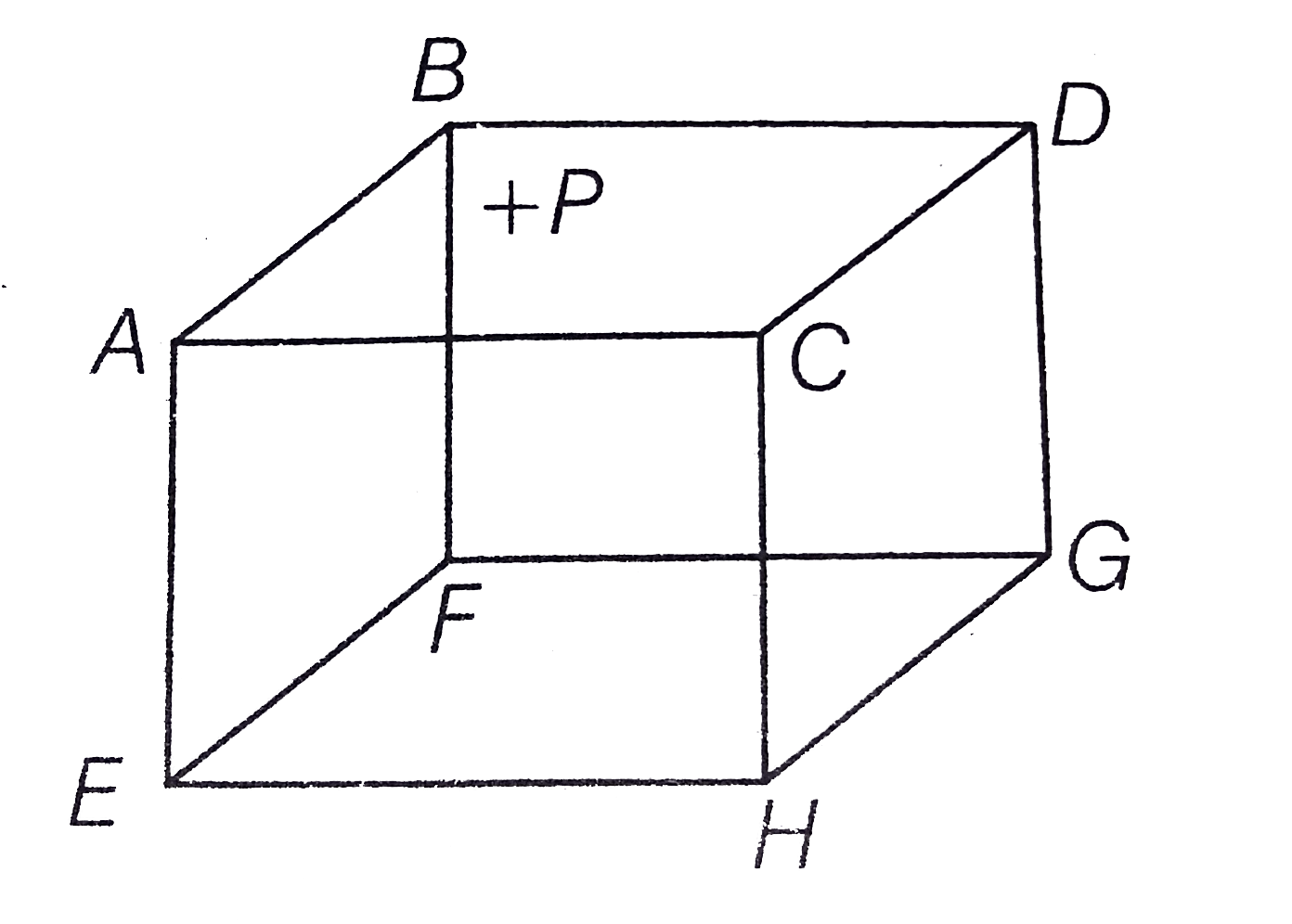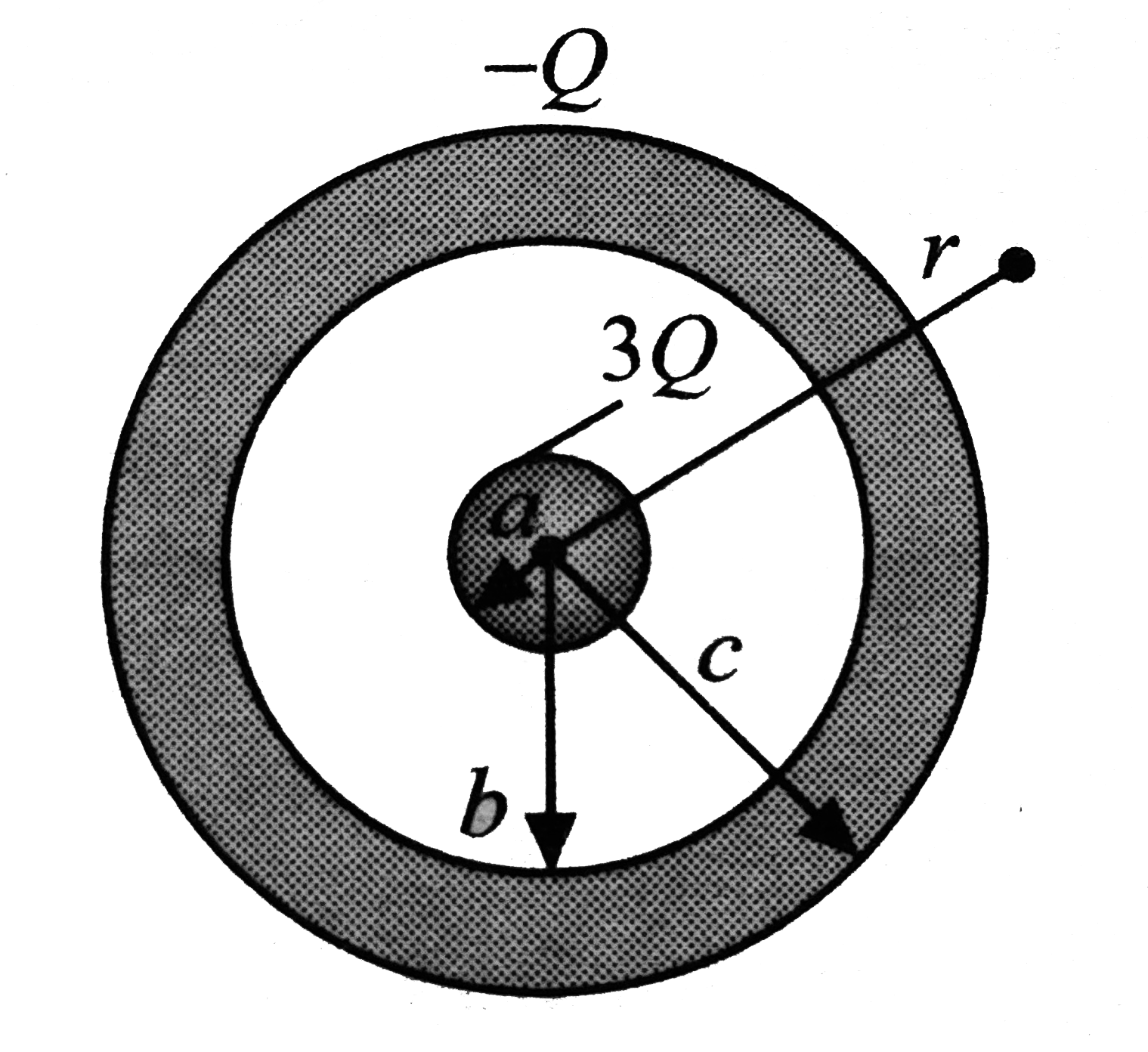ABCDEFGH is a hollw cube made of an insulator(figure)

face ABCD has positive charges on it. Inside the cube, we have ionsed hydrogen.
The usual kinetic theory expression for pressure
will be valid
will not be valid, since the ions would experience force other than due to collision with the walls
will not be valid, since collision with walls would not be elastic
will not be valid because isotropy is lost
The correct Answer is:B, D
Sol. (b,d) According to the problem, inized hydrogen is present inside the cube, they are having charge. Now, due to the presence of positive charge forces due to collosion with the walls of container. So, these force must be of electrostic nature. Hence, Isotropy of system is lost at only one face ABCD because of the presence of external positive charge. The usual expression for pressure on the basis of kinetic of kinetic theory will be valid.
Topper's Solved these Questions
- BOOK - NARAYNACHAPTER - KINETIC THEORY OF GASESEXERCISE - LEVEL-V10videos
KINETIC THEORY OF GASES
- BOOK - NARAYNACHAPTER - KINETIC THEORY OF GASESEXERCISE - LEVEL-VI10videos
KINETIC THEORY OF GASES
- BOOK - NARAYNACHAPTER - KINETIC THEORY OF GASESEXERCISE - LEVEL-3(C.W)13videos
KINETIC THEORY OF GASES
- BOOK - NARAYNACHAPTER - GRAVITATIONEXERCISE - EXERCISE -IV40videos
GRAVITATION
- BOOK - NARAYNACHAPTER - LAW OF MOTIONEXERCISE - EXERCISE - IV35videos
LAW OF MOTION
Similar Questions
ABCDEFGH is a hollow cube made of an insulator (figure) face ABCD has positive charge on it. Inside the cube, we have ionised hydrogen.
 View Solution
View SolutionConsider a solid cube made up of insulating material having a uniform volume charge density. Assuming the electrostatic potential to be zero at infinity, the ratio of the potential at a corner of the cube to that at the centre will be
View Solution
Knowledge Check
- Question 1 - Select One
ABCDEFGH is a hollow cube made of an insulator (figure) face ABCD has positive charge on it. Inside the cube, we have ionised hydrogen.
 Awill be validBwill not be valid, since the ions would experience forece other than due to collisions with the walls.Cwill not be valid since collisions with would not be elasticDwill not be valid because isotropy is lost
Awill be validBwill not be valid, since the ions would experience forece other than due to collisions with the walls.Cwill not be valid since collisions with would not be elasticDwill not be valid because isotropy is lost - Question 2 - Select One or More
ABCDEFGH is a hollow cube made of an insulator (figure) face ABCD has positive charge on it. Inside the cube, we have ionised hydrogen.
 Awill be validBwill not be valid since the ions would experience forces other than due to collisions with the walls.Cwill not be valid since collisions with walls would not be elastic.Dwill not be valid because isotropy is lost.
Awill be validBwill not be valid since the ions would experience forces other than due to collisions with the walls.Cwill not be valid since collisions with walls would not be elastic.Dwill not be valid because isotropy is lost. - Question 3 - Select One
Consider a solid cube made up of insulating material having a uniform volume charge density. Assuming the electrostatic potential to be zero at infinity, the ratio of the potential at a corner of the cube to that at the centre will be
A1:1B1:2C1:4D1:8
Consider a point charge q=1mC placed at a corner of a cube of sides 10 cm . Determine the electric flux through each face of the cube.
Strategy : We will learn about the utility of symmetry in solving problems with the help of Gauss's law . Here we'll use the symmetry of the situation,which involves the faces joining at the corner at which the charge resides.

(a) A charge q is placed atthe corner of a cube. (b) By surrounding the charge with a series of cubes such that the charge is at the centre of a larger cube, we have created an arrangement sufficiently symmetric to be able to solve for desired flux values.
You can see from figure that for these faces →E.ˆn=0. Since the normal is perpendicular to the surfaces while the electric field goes off in a spherically symmetric pattern and lies in the sides . In other words , the electric field that originates at the charge is tangential to the surface of these three sides. This means there is no flux through these sides. The electric flux through each of the remaining three faces of the be must be equal by symmetry . We'll referto these faces with the label F.
To fidn the flux through each of the sides F, we acan use a technique that puts the single charge in the middle of a larger cube. It takes seven other similarly placed cubes to surrounds the points charge q completely in figre. The charge is at the dead centre of the enw larger cube. So, the flux through each of the six sides of the large cube will now have an electric flux of one sixth of the total flux F. So given that the total structure is completely symmetric, the flux through a side F is one fourth of the flux through the larger side.View SolutionA cube has been cut out from a piezoelectric crystal. When the cube was compressed, it exhibited electric charges on the faces: a positive charge on the upper face and a negative charge on the lower (Figure (a)). When the cube was stretched, the charges were found to change their signs (Figure (b)). What will be the signs of the charges on these faces if pressure is applied as shown in Figura (c) ?
View SolutionA solid insulating sphere of radius a carries a net positive charge 3Q, uniformly distributed throughout its volume. Concentric with this sphere is a conducting spherical shell with inner radius b and outer radius c and having a net charge -Q, as shown in figure

a. Consider a spherical Gaussian surface of radius rgtc, the net charge enclosed by this surface is .............
b. The direction of the electric field rgtc is .............
c. The electric field at rgtc is ............... .
d. The electric field in the region with radius r, which cgtrgtb, is ...............
e. Consider a spherical Gaussian surface of radius r, where c>r>b, the net charge enclosed by this surface is ................ .
f. Consider a spherical Gaussian surface of radius r, whereb>r>a, the net charge enclosed by this surface is ................. .
g. The electric field in the region b>r>a is ................ .
h. Consider a spherical Gaussian surface of radius r<a. Find an expression for the net charge Q(r) enclosed by this surface as a function of r. Note that the charge inside the surface is less than 3Q.
i. The electric field in the region r<a is ................. .
j. The charge on the inner surface of the conducting shell is .......... .
k. The charge on the outer surface of the conducting shell is .............. .
l. Make a plot of the magnitude of the electric field versus r.View SolutionA solid insulating sphere of radius a carries a net positive charge 3Q, uniformly distributed throughout its volume. Concentric with this sphere is a conducting spherical shell with inner radius b and outer radius c and having a net charge -Q, as shown in figure

a. Consider a spherical Gaussian surface of radius rgtc, the net charge enclosed by this surface is .............
b. The direction of the electric field rgtc is .............
c. The electric field at rgtc is ............... .
d. The electric field in the region with radius r, which cgtrgtb, is ...............
e. Consider a spherical Gaussian surface of radius r, where c>r>b, the net charge enclosed by this surface is ................ .
f. Consider a spherical Gaussian surface of radius r, whereb>r>a, the net charge enclosed by this surface is ................. .
g. The electric field in the region b>r>a is ................ .
h. Consider a spherical Gaussian surface of radius r<a. Find an expression for the net charge Q(r) enclosed by this surface as a function of r. Note that the charge inside the surface is less than 3Q.
i. The electric field in the region r<a is ................. .
j. The charge on the inner surface of the conducting shell is .......... .
k. The charge on the outer surface of the conducting shell is .............. .
l. Make a plot of the magnitude of the electric field versus r.View SolutionA cube is made from six thin insulating square faces, each square having side 'd' and carrying a uniformly distributed charge of Q. The magnitude of electric flux leaving the sixth face, due to the electric field of other five faces, is φ. The magnitude of electrostatic force on each face of cube is F. Then,
View Solution

